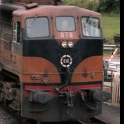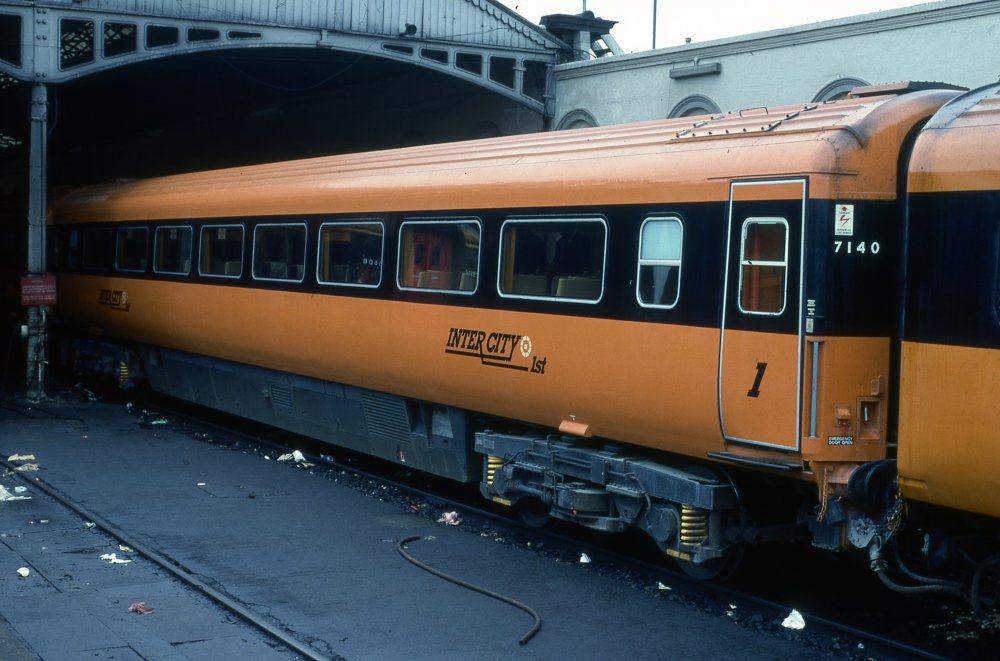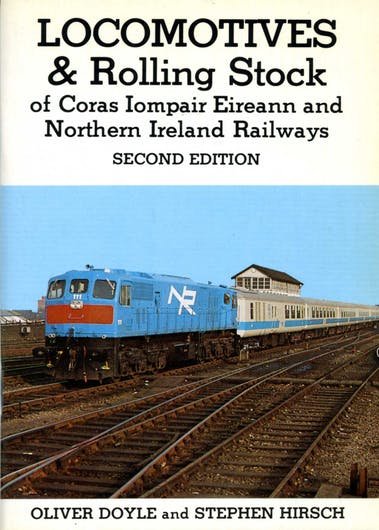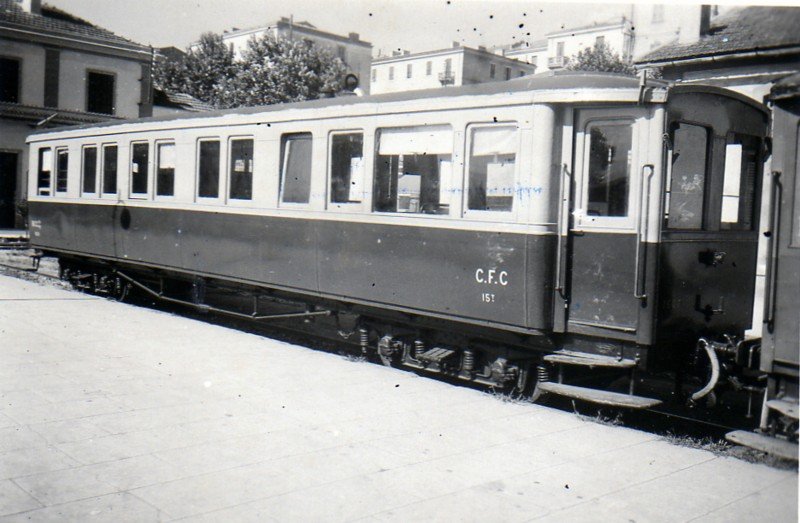-
Posts
420 -
Joined
-
Last visited
Content Type
Profiles
Forums
Events
Gallery
Blogs
Store
Community Map
Everything posted by hexagon789
-
I think I am over thinking it. There would be also an advantage over the Mk2Ds in that you only need 3 basic bodyshells against 5 for the 2Ds, so it should make a run cheaper actually because you don't need as many different toolings.
-
Trouble is - would it sell well enough? True the Mk2Ds went very well, but I can't help feeling the Mk3s are a decidedly more niche market, especially in Supertrain. At least with the Mk2Ds there is a legitimate way to run them as shorter trains suiting more peoples' layouts, with the Mk3s EGV+6 is about the shortest prototypical formation and most sets were EGV+7 or 8. Perhaps I'm over thinking it.
-
Never mind, my fault. It is there but I overlooked it being in the Northern Ireland album even though the photo was taken in Dublin, link below: Edit: Literally just found it myself, and posted as you did!
-
I knew it! I knew this would happen! As soon as I typed out my reply above I thought: "I bet there's a photo somewhere that disproves that idea"! So, 111 came out with red, 112 & 113 orange then? With presumably that change to yellow being only post 1984. Given Mr Heywood has an excellent flickr account, I'm slightly surprised I've not cone across the photo unless it's unique to the book.
-
Wouldn't mind some PRs or Laminates, would suit my approx era but oh if they modelled the Mk3s in Supertrain with proper doors, what a beautiful thing that would be: I can't look at that photo without hoping one day someone in the modelling world does it justice.
-
Not my era, but what a crisp shot that is. Really shows how good B&T can look when you see photos like that.
-
Personally I'd love to see either, but the progress on the model to see what it looks like in the flesh would be most welcome. Already kind of smitten with the ltd ed. "A"
-
Don't like to assume off cover photos, but does the June 1973 issue cover the Mk2D stock? As in both the introduction, stock details and fleet plans? If not is it one of the earlier journals? Thanks in advance.
-
Maynooth-Connolly isn't far from the border so quite possibly she hopped across for the day, seen a few photos like that. I'm probably going to get this off but I will try for as delivered warning panels: 111 - red panel (seems deep red)* 112 - orange panel (looks much lighter)* 113 - yellow panel *they look a different colour to me but perhaps someone can confirm if they are It seems yellow was standardised on after a few years and 111/112 painted to suit between 1982-84. 113 seems to have entered service with the later standard. If you are modelling 1990s, all would be yellow panels anyway
-
Actually 112 seems to have had an orange warning panel as new. Found a photo of it in 1981 and it definitely looks a different colour to the deep red on 111.
-

Latest realistic era for MM MkIID coachng stock
hexagon789 replied to murphaph's topic in Irish Models
Well the funny thing was it was the first EGV - 7601! It was part of the first two Mk3 sets in traffic so I think a contender for Mk3 to have worn original livery the longest. 7140 on the other hand seems to have been one of the first to be repainted as opposed to introduced in the new scheme, it was also part of the first two sets in traffic. -
"C"s seemed to get used at Hueston in the 1970s, there's a got photo of one shunting AC stock on Flickr I can dig up if you like. As for Galway train frequencies, depends on the year; Westport and Sligo always had less though in loco-hauled days even in the heady days of the April 1973 timetable.
-

Latest realistic era for MM MkIID coachng stock
hexagon789 replied to murphaph's topic in Irish Models
No problem, should I ever come across an ST Air-con post-1988 I'll put it up just to prove my mind wasn't playing tricks on me in the first place! -
How far south for 113? Not that unusual for NIR to lend one out particularly after the 201s were in service. 111 had the red warning panel as delivered and that's how it appears on the front of the second Doyle/Hirsch book (1981), afaik 112 did not and 113 certainly didn't. Oh and the "8" was added much later to Northern Irish locos and railcars for the computer system as otherwise train numbers clssh with buses. Even now though not all carry the "8" on them but the inclusion of one puts things at mid-1990s onwards.
-

Latest realistic era for MM MkIID coachng stock
hexagon789 replied to murphaph's topic in Irish Models
Well, I've found a Dublin-Cork express with the EGV still in ST dated 1988, rest of train including the 071 is in "Tippex", "IR 'points'" on the loco. Still cannot find any AC stock in ST after 1988 and I've pretty much exhausted all the photo galleries I can think of that I use for reference purposes. -

Latest realistic era for MM MkIID coachng stock
hexagon789 replied to murphaph's topic in Irish Models
Probably a Park Royal I'd hazard, given they were being withdrawn but the Cravens lasted another 10-12 years. -

Shortest train utilising Cravens snack car?
hexagon789 replied to murphaph's question in Questions & Answers
Do you mean actually in use as a snack car or purely in the train formation? Iirc they were converted for the Rosslare line to allow the last use of timber stock on mainline services to cease, the Rosslare then became two sets of Cravens until replacement by Mk2Ds. For use of a Cravens snack simply as a standard in a train formation, I can link to a page with a photo of I think 1518 as part of a Cork-Mallow-Tralee service formed of Cravens and a BR Van though it's 2004 not 1990s but I don't see why it wouldn't have happened in the 1990s after the cars became surplus to catering requirements. -

Murphy's CIE Mk IId coaches - What's What
hexagon789 replied to FrankS's question in Questions & Answers
If like me, you've made a master list showing each coach by year you'll know that's a minefield of near epic proportions! Seriously though, in the UK changes to coach layouts are very well documented in books and official papers, in Ireland the books referencing rolling stock aren't published very frequently. I got sufficiently narked with disagreeing sources I made my own list. If anyone is interested let me know and I can put it up in another thread (Mk2D and Mk3 types only). It's seating layout only, liveries are another minefield which I don't fancy treading through! -

Latest realistic era for MM MkIID coachng stock
hexagon789 replied to murphaph's topic in Irish Models
Broadly ties in with what I was thinking jhb, the main issue is precisely tying down when each range of stock was completed. There are definitely Cravens and Park Royals without the stripes in 1990 or so, the Mk2D and Mk3 stock seems to have all be done by 1989 at least and certainly I cannot find even Mk2Ds in ST after 1988, I had thought I'd seen a photo of one in such in 1990 but I think I got the date wrong. -

Latest realistic era for MM MkIID coachng stock
hexagon789 replied to murphaph's topic in Irish Models
Jhb would probably know, he's a mine of information on all things livery-related. I've just had another thought, I assume you would be modelling mixes rakes of Tippex/ST? All ST rakes went out in 1987, I don't think you'd see any after that and even in 1988 most coaches seemed to have gained Tippex. In response to my earlier point, the three photos I was thinking of are all dated 1988 not 1990. I have another few to check but it might actually have been earlier than 1990. -

Latest realistic era for MM MkIID coachng stock
hexagon789 replied to murphaph's topic in Irish Models
About 1990. They first started getting repainted in about 1988, the Mk3 stock was done first. I've seen a couple of photos with the odd Mk2D still in Supertrain in 1990 in Sligo and Belfast sets. It seems the composites were the last to be treated as all the examples are vehicles with the composite bodyshell. (N.B. in 1989 only 3 Mk2D composites were still such, the rest had been converted to Standards, five in 1973 and one in about 1988-ish; one of the 1973 converted composites would later be converted back. Additionally all but one of the Superstandards (full Firsts) was converted to Standard by 1989 as well.) -

BR blue & grey on Irish rails
hexagon789 replied to dave182's topic in Photos & Videos of the Prototype
Two standards and the last is the unconverted Brake First Corridor by the looks of it, it possessed a large conference compartment in the middle. -
I thought that but wondered why the two first class compartments seemed to have external doors while third class had a door, gap, door. I like old coaching stock, the variety of types and designs is infinitesimally interesting but sometimes I wish there were interior diagrams to make sense of the exteriors sometimes! Going off on a bit of a tangent, the one narrow guage network I know had well-appointed stock for what it was would be the Corsican Railways. In the mid-1930s the best trains had carriages which resembled mini-Pullman cars, complete with coupés, toilets with hot and cold water and I believe electric lighting, though seemingly ungangwayed. Such comforts must have been welcome back then given the paucity and schedule of trains that there was then, the mainline had only two through trains each way, a morning stopping service and an early afternoon express each-way taking 5.5 hours for the 158km. This is the only picture I've managed to find and it's from a different site to the other information so I am making an assumption that it's the correct type of carriage but it looks right for the description:
-
A brake composite by the looks of it. Two of the third class compartments appear not to have doors, though?
-
Thanks, that's much more like what I was looking for, don't suppose you have the actual ranges? If "A" was 1200hp+, would "B" then be 950-1199hp; "C" 550-949hp etc?
.png.c363cdf5c3fb7955cd92a55eb6dbbae0.png)




